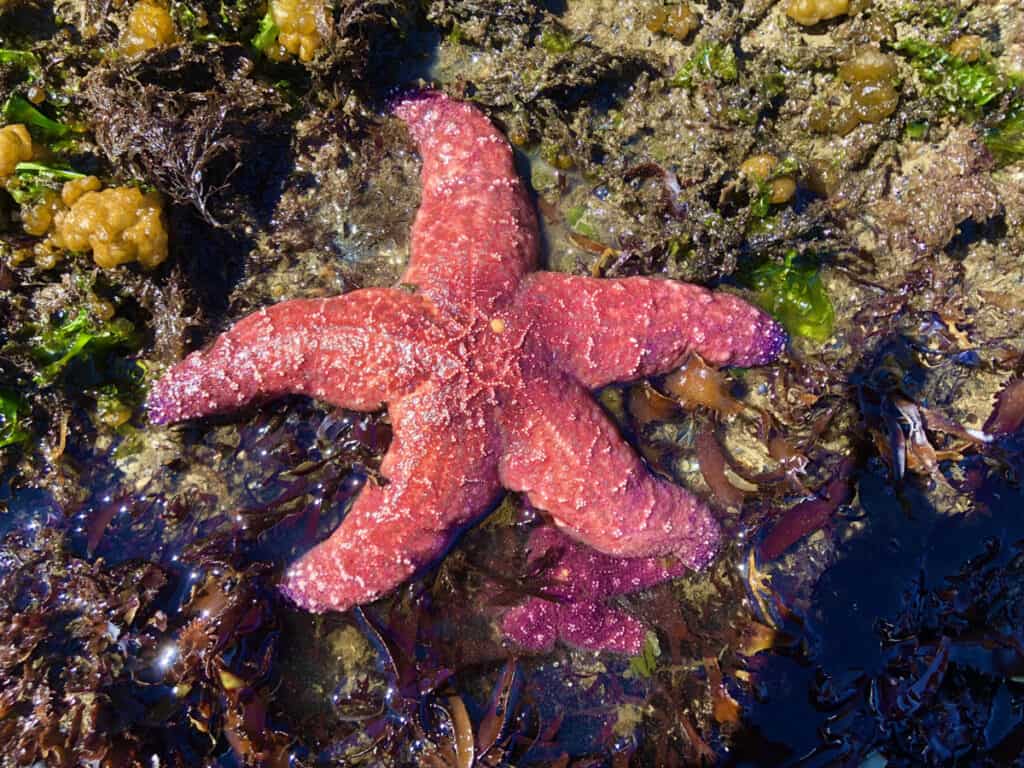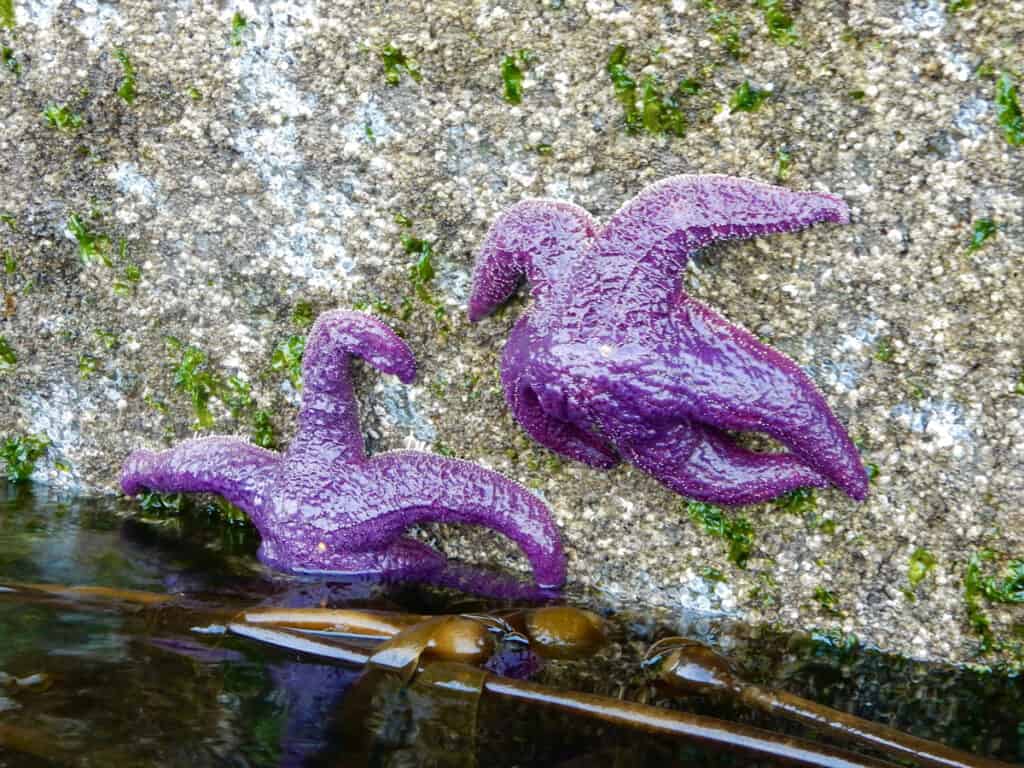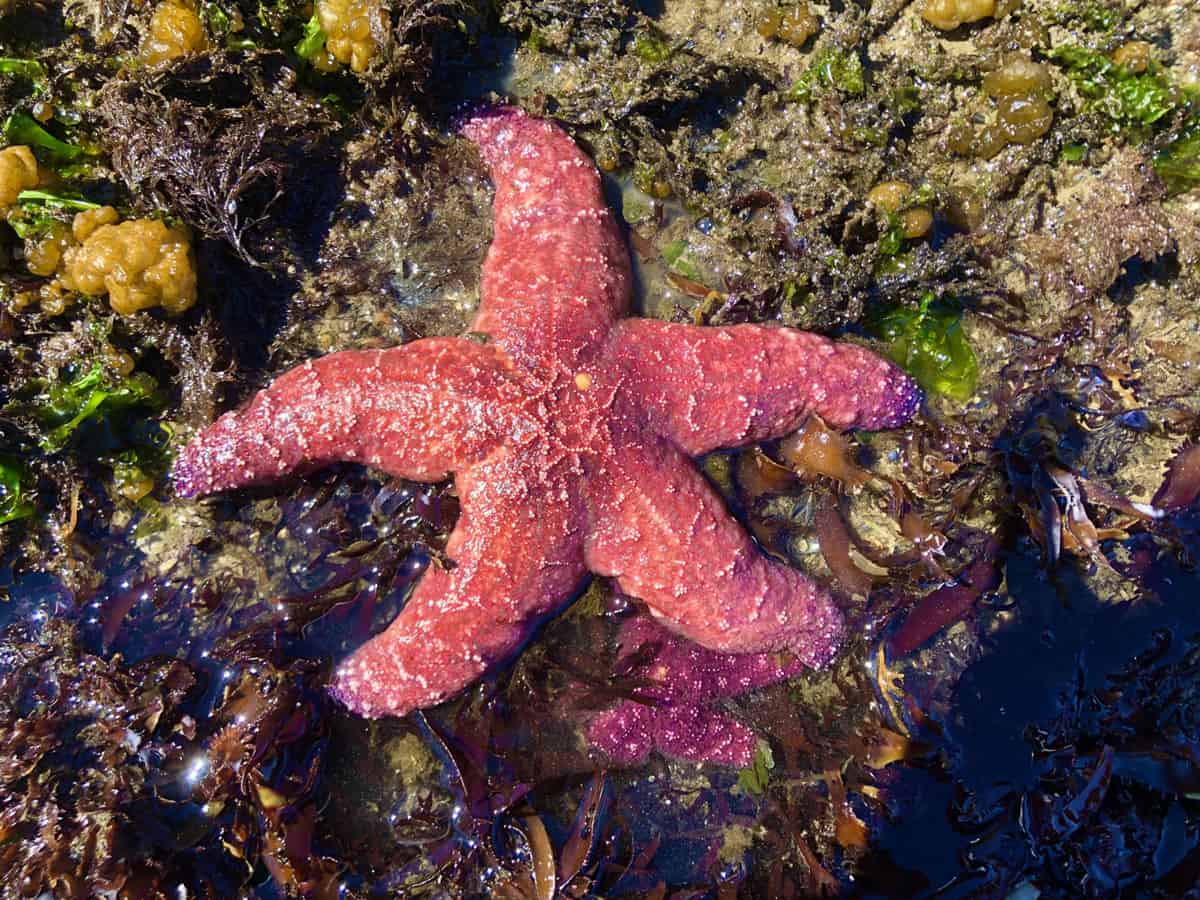by Sofia Osborne
On a rainy day in May, 55 Saturna Island residents took to the intertidal zone in search of sea stars. With rulers and guidebooks in hand, they noted the size, colour, and species of stars, all in the hopes that their observations might help researchers protect these iconic marine creatures, and determine the cause of the mysterious sea star wasting syndrome (SSWS) that has decimated populations up and down the west coast of North America.
This was the second annual Sea Star BioBlitz held in Saturna, the southernmost of British Columbia’s Gulf Islands. The BioBlitz is a citizen science event organized by local sea star enthusiast Robyn Quaintance, who saw the effects of SSWS firsthand on her daily kayak trips and wanted to do something to help.

An ochre star (pisaster ochraceus) shown with its characteristic short arms and an array of white spines. Courtesy of Robyn Quaintance
“It was really sad and kind of ugly,” she recalls. “You could see some of them would lose one or two of their legs, and that they were wasting away.”
While SSWS is not a new disease, the current wave has been devastating, causing what scientists say is the largest disease epidemic ever observed in wild marine animals. The sunflower sea star, which can have as many as 24 arms, was particularly affected, and its decline has had major repercussions for the kelp forest ecosystems where it serves as an important predator.
Melissa Miner, a researcher at UC Santa Cruz, has been helping monitor sea stars with the Multi-Agency Rocky Intertidal Network (MARINe), a consortium of organizations along the west coast. It was one of MARINe’s partner organizations, Olympia National Park, that first observed sea stars with wasting disease in 2013. Within months, other MARINe groups were finding diseased stars as well.
“When we started to see the disease kind of ramp up, we were getting a lot of requests and concern from the general public, and a lot of people reaching out wondering how they could help,” she says. “We realized that we could train people to identify sea stars and use the same methods we use to track long-term trends in sea star populations.”
Now, Miner estimates there are 15 to 20 long-term monitoring sites operated by citizen scientists who have been trained by researchers from MARINe. She cautions that this is a big commitment, and that for a simpler way to contribute, anyone is welcome to submit observation data to the MARINe website. That data will be added to their sea star tracking map, which helps alert researchers to areas that the disease is being seen.
“We researchers within the marine group, we are experts in species identification … but we are not experts for every single place along the west coast. Those are the people who are there every day; they’re the ones who are going to notice if something seems different,” Miner says. “It has been really valuable to have that collaboration with various groups and individuals who really have that amazing local knowledge.”

Two ochre stars (pisaster ochraceus). Courtesy of Robyn Quaintance
While there are hypotheses about what might cause SSWS, scientists still don’t have an answer, Miner explains. Data from the sea star tracking map is being used to test possible correlations between SSWS and factors like sea surface temperature, shipping traffic, and distance to the nearest large population centre. So far, according to Miner, nothing has correlated nicely with the patterns on the map.
Data from the first Saturna sea star BioBlitz was compiled by local high school students and sent to MARINe. They plan to do the same with this year’s data. As a retired teacher, Quaintance believes getting students—and everyone else—involved in citizen science is vital.
“I don’t think that we, as a society, can properly fund as many scientists as we need to, because there’s so much going on,” she said. “I really think it’s important for us as just regular citizens to try to help get the information out there of how many sea stars we have.”
To get involved, visit the Saturna Island Marine Research & Education Society website for more information on the next Sea Star BioBlitz and other marine research projects conducted on Saturna Island.
[buzzsprout episode=’11070615′ player=’true’]

